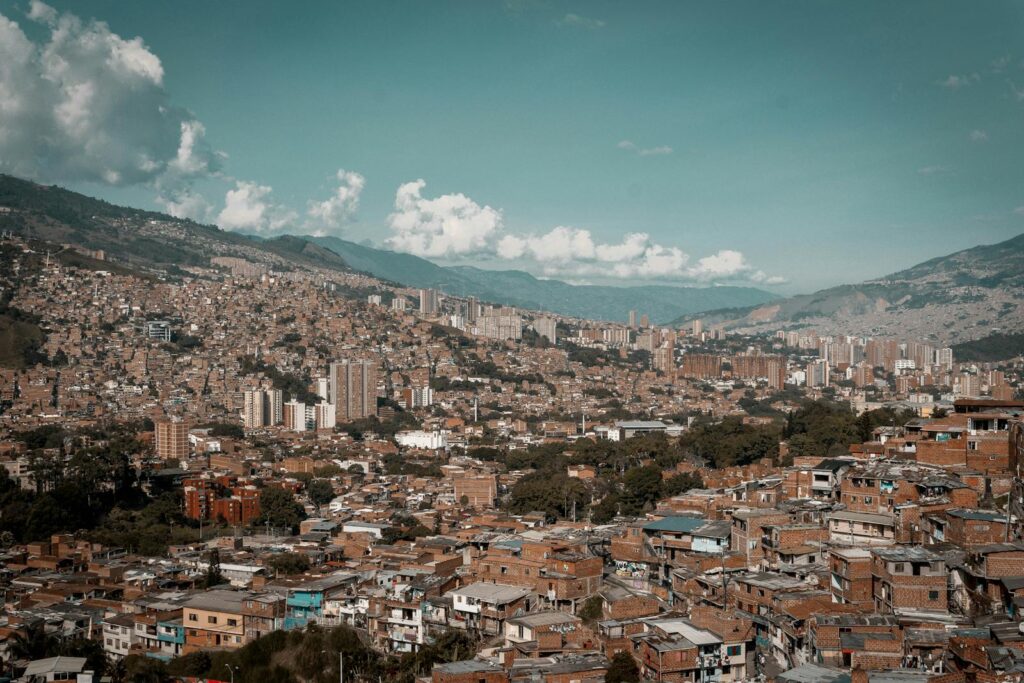Latin America’s Old-World Soul: Where Europe’s Elegance Meets a Wilder Rhythm

If you crave cobblestones, domes, and café tables but don’t want to fly across the Atlantic, look south. From the Andes to the Atlantic, Latin America hums with European grace—then syncopates it with its own pulse. Belle Époque architecture, colonial plazas, and baroque facades survive here not as relics but as stages for something wilder: salsa bleeding into street poetry, tango beside espresso, galleries that smell faintly of rum and rain. These are cities that took Europe’s blueprints and taught them to dance.
The Paris You Can Tango In
In Buenos Aires, comparisons to Europe feel inevitable and unfair. Yes, its grand avenues mirror Paris, and its Beaux-Arts palaces would make Haussmann smile. But where Paris sips quietly, Buenos Aires flirts. “Theaters aren’t trophies here; they’re metabolism,” one local cultural official told Forbes. The city boasts more performance halls than anywhere else in the world, each one a lung feeding its restless arts scene.
Tango—born in immigrant courtyards and port bars—still rules the night. You can sip a cortado beneath an Art Nouveau skylight and think you’ve slipped into the Left Bank, until a bandoneón begins to breathe and someone pulls you from your chair. The song that follows is older than memory and far less polite.
Buenos Aires is Europe rewritten in lunfardo, its street slang: thicker steaks, sharper humor, later hours. The grandeur feels earned rather than inherited. “This city learned refinement through effort, not privilege,” a theater director said to Forbes. It’s the difference between imitation and improvisation—and the reason the so-called “Paris of South America” keeps rewriting the score.
Where Spring Is a Verb
If Buenos Aires is a remix, Medellín is an outright reinvention. Nestled in Colombia’s Aburrá Valley, the “City of Eternal Spring” carries a climate that seems to forgive everything. Once defined by fear, Medellín now hums with civic pride and creative audacity. As Forbes notes, it’s a metropolis of more than 40 museums, 21 parks, and 28 theaters, its calendar crowded with festivals of flowers, poetry, and books.
Its European kinship isn’t found in stone cathedrals or Renaissance façades but in the belief that public life is an art form. Cable cars climb hills once ruled by violence, connecting neighborhoods to libraries that double as social lighthouses. December’s alumbrados, the valley’s legendary light displays, turn the night into stained glass.
“You feel people here reclaiming space through beauty,” said urban planner Lina Morales in an interview with Forbes. “It’s civic poetry.” Medellín’s rhythm is closer to Barcelona’s optimism than to any gothic nostalgia—proof that modernity, handled tenderly, can be romantic too.
Coastal Hybrids and Portside Dreams
Head west to Chile and you meet Valparaíso, a port city that seems to tumble into the Pacific in technicolor. Its steep cerros glitter with murals; its funiculars groan up streets that defy geometry. Lisbon comparisons are common—the tiled corners, the Atlantic light—but “Valpo,” as locals call it, refuses nostalgia. Here, bohemia never went out of fashion. The ghosts of poets—Neruda, Huidobro—share the hills with tattooed painters and students playing guitars beside century-old mansions.
“The whole city feels like a studio,” artist Camila Aguilar told Forbes. “And the ocean is always watching.” Its UNESCO-listed historic quarter preserves 19th-century churches and plazas, but the real museum is outdoors, sprayed in color.
Across the Caribbean, the European echo takes on a sunnier accent in Las Terrenas, a town on the Dominican Republic’s Samaná Peninsula. French expatriates began arriving in the 1970s, soon joined by Italians, Germans, and Brits. Today, you can order croissants before breakfast, Dominican ceviche for lunch, and dance to bachata by dusk. “French is almost a second language here,” local hotelier Stéphane Dugas told Forbes. “But the rhythm—it’s all Dominican.”
The charm is in the blend: European refinement meeting Caribbean informality. It’s Riviera manners in flip-flops, a postcard of coexistence where even the street dogs seem bilingual.

Quiet Heritage, Loud Ideas
For those chasing serenity instead of spectacle, Colonia del Sacramento in Uruguay offers Europe’s hush without Europe’s crowds. Cobblestone lanes curl along the Río de la Plata, pastel houses lean into one another, and cafés take their time. Climb the lighthouse, cross the drawbridge of a 17th-century gate, and you’ll understand why UNESCO listed it. Uruguay’s reputation as the “Switzerland of Latin America,” Forbes reminds us, comes not only from political calm but from a national devotion to civility—a quality Colonia wears like sunlight.
Farther north, in Mexico’s Guanajuato, European echoes turn baroque and kaleidoscopic. Built on silver wealth, the city folds through ravines and tunnels; its traffic flows underground so that plazas above belong to pedestrians and song. When the evening light hits the pink sandstone, the city looks like Florence dreamt by a mariachi. Students in capes—the traditional estudiantinas—serenade couples along alleys too narrow for cars. “Every corner sounds like a memory,” said a local guide to Forbes.
Then there’s Curitiba, Brazil’s quiet marvel of planning and pragmatism. Immigrants from Italy, Germany, and Poland brought Old World trades; the city answered with New World design. Parks form concentric green rings around modernist landmarks, and libraries known as “Lighthouses of Knowledge” anchor neighborhoods. “It’s a city that believes elegance and efficiency can share the same street,” architect Ana Pacheco told Forbes. Where Europe polishes history, Curitiba prototypes the future.
Why Visit the Cousins, Not the Copies
These destinations don’t mimic Europe; they converse with it. They’re cousins across the Atlantic—sharing lineage, diverging in temperament. The pleasure lies in the differences: a tango instead of a waltz, a plaza alive past midnight, a cathedral echoed by birdsong instead of bells.
There are practical motives—shorter flights, friendlier budgets, warmer winters—but the deeper appeal is emotional. Europe offers poise; Latin America adds pulse. “Here you find the same beauty, but it breathes faster,” photographer Daniela Rojas told Forbes.
Each city makes its argument. Buenos Aires keeps you up too late. Medellín redefines what a public space can heal. Valparaíso and Las Terrenas show that salt air improves everything. Colonia and Guanajuato slow the clock without stopping it. Curitiba proves that design can be democratic. Together they compose a map of places that inherited elegance and answered with joy.
Crossing the Atlantic will always have its allure, but crossing the hemisphere offers something rarer: the sense of discovering Europe’s charm reborn—with better coffee, warmer welcomes, and music that refuses to stay in the background. In Latin America, the past still whispers in cobblestones—but the rhythm that carries you forward belongs entirely to now.
Also Read: Lima Turns Purple: The Procession of the Lord of Miracles Returns to the Heart of Peru





